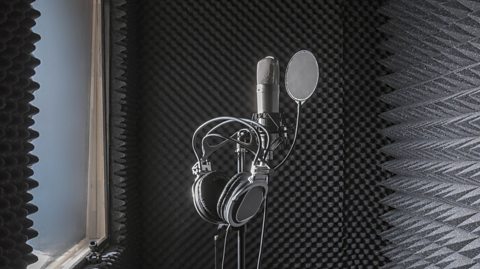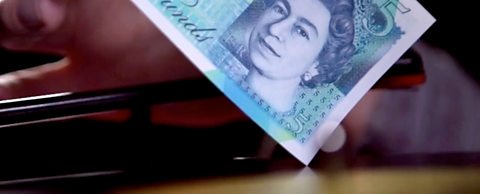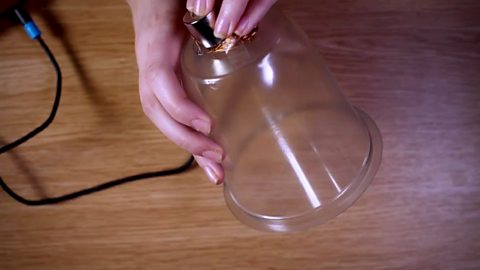Key points
- Sounds travel at different speeds through gases, solids and liquids.
- You hear an echo when a sound wave reflects off a surface and reaches your ear.
- You can work out the speed of sound using the equation:
Speed = distance ÷ time
Speed of sound in air
Sound waves are vibrations that are passed on between particles. The speed of sound is the distance a sound travels divided by the time it takes.
Speed = distance ÷ time
Watch the video to see how you can measure the speed of sound in air:
Example
If a sound travels 170 metres (m) in 0.5 seconds (s) through the air. What is the speed of sound in the air?
\(Speed = distance / time \)
\(Speed = 170 m / 0.5 s \)
\(Speed = 340 m/s \)
Remember: In air sound travels at 340 m/s (metres per second).
Speed of sound in other materials
- If you put your ear on the desk and tap the edge of the desk, you are hearing the sound through a solid.
- If you are underwater in a swimming pool you are hearing sound through a liquid.
- Sound can travel through anything made of particles.
- How quickly sound travels depends on how close together the particles are.
- The particles in gases are further apart than liquids, and so sound travels slower in a gas than a liquid. The particles in a solid are closer still and so sound travels fastest in solids.
- If there are no particles, like in the VacuumSomewhere that there are no particles. Like in space. of space, sound can’t travel at all.
| Material | Speed of sound |
|---|---|
| Air (a gas) | 340 m/s |
| Water (a liquid) | 1500 m/s |
| Wood (a solid) | 3900 m/s |
| Space (a vacuum) | Sound cannot travel |

Echoes
- You hear an echoA sound you hear after a sound wave reflects off something. when a sound bounces off something and comes back to your ear.
- An echo is made by a sound wave reflecting off a surface.
- The sound has to travel there and back, therefore, the distance travelled by the sound for an echo is twice the distance of the surface that it is bouncing off of.
Example

A ship off the coast is 510 m away from a cliff and blows its horn. If the people on the ship hear an echo 3 seconds later, what is the speed of the sound wave?
Remember: for an echo, the distance the sound travels is twice the distance to the surface it reflects off of.
So, the distance travelled is: 2 x 510 m = 1020 m
\(Speed = distance/time\)
\(Speed = 1020 m / 3 s\)
\(Speed = 340 m/s\)
So, the speed of the soundwave is 340 m/s (metres per second).
Echoes in a room
Some rooms, like sports halls, produce lots of echoes, but other rooms, like bedrooms, produce less echoes.
That’s because hard, smooth surfaces are good at reflecting sound.
Soft surfaces are good at absorbing sound. Rooms with lots of soft surfaces, like carpets and curtains, produce less echoes.

Test your knowledge
GCSE exam dates 2025
Find out everything you need to know about the 2025 GCSE exams including dates, timetables and changes to exams to get your revision in shape.

More on Waves
Find out more by working through a topic
- count13 of 15

- count14 of 15

- count15 of 15

- count1 of 15
